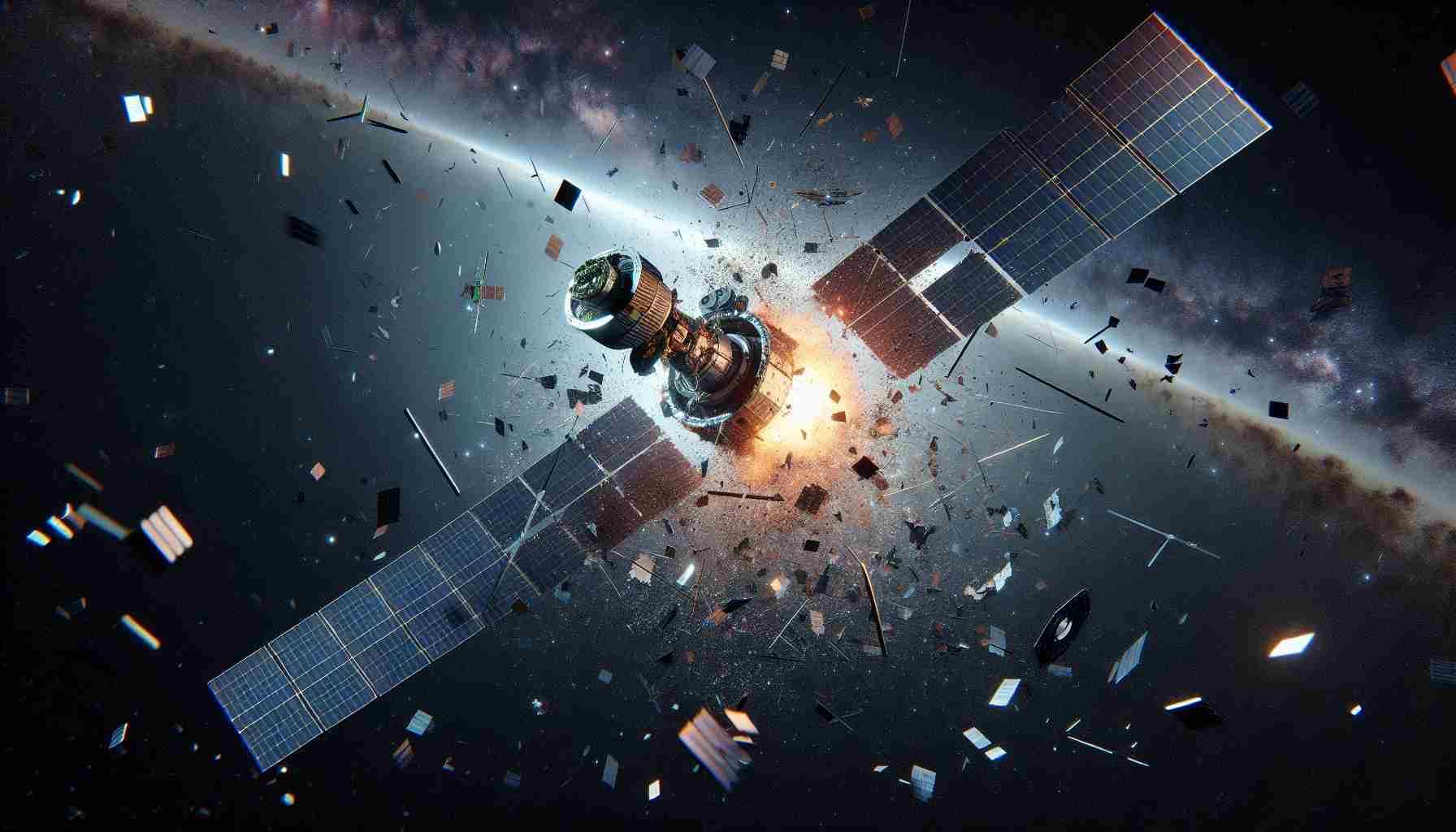
A significant incident in orbital satellite activity has recently come to light as a major communications satellite dismantled in space. This event affected numerous regions, from Europe to Asia, highlighting the growing issue of space debris encircling Earth. The satellite in question, Intelsat 33e, operated at an altitude of approximately 35,000 kilometers above the Indian Ocean and was primarily responsible for providing broadband communications services.
Initial reports from October 20 indicated that Intelsat 33e had suffered a sudden loss of power. Subsequently, the United States Space Forces offered confirmation that the satellite had disintegrated into more than 20 distinct fragments. The exact cause of the breakup remains unidentified, raising questions about the stability of satellites in orbit as their numbers continue to increase.
The disintegration of Intelsat 33e is not an isolated incident. Historically, similar events have occurred, stemming from deliberate destruction, unintentional collisions, or even heightened solar activity disrupting satellite functions. Intelsat 33e, designed by Boeing and launched in 2016, had previously demonstrated operational challenges, including delays in achieving its designated orbit and unexpected fuel consumption during regular altitude maintenance maneuvers.
As satellite technology advances and launches escalate, the implications of such breakups on space traffic and debris management merits further examination. The future of reliable communication technology and safety in orbital operations hinges on understanding and addressing the growing threat of space debris.
The recent breakup of the Intelsat 33e satellite has sparked renewed discussions about the escalating problem of space debris and its implications for the future of space activities. This incident is a stark reminder of the risks posed by fragments of defunct satellites, which can orbit Earth at high velocities, posing threats to operational spacecraft and the International Space Station (ISS).
What are the key questions arising from this incident?
1. What constitutes space debris?
– Space debris refers to any non-functional spacecraft or parts of spacecraft, including spent rocket stages, defunct satellites, and fragments resulting from collisions or disintegration. Currently, there are over 34,000 pieces of debris larger than 10 centimeters in orbit.
2. How does space debris affect operational satellites?
– Even small pieces of debris can cause significant damage due to their high speeds, which can exceed 28,000 kilometers per hour. A collision with just a 1-centimeter fragment can be catastrophic for functioning satellites.
3. What measures can be taken to mitigate space debris?
– Solutions include updating satellite design to enhance end-of-life disposal, implementing active debris removal technologies, and enforcing stricter guidelines for satellite launches and operations.
Key challenges and controversies
The escalation of space debris has brought several challenges to the forefront:
– Regulatory Framework: There is currently no universal governing body overseeing space debris management. Various nations and private entities have different regulations, leading to potential oversights.
– Cost of Compliance: Developing and integrating debris mitigation technologies can significantly increase costs for satellite operators, affecting the economics of space missions.
– The Tragedy of the Commons: The increasing number of private companies entering the space market has raised concerns about over-saturation of low Earth orbit (LEO), which is considered a shared resource. The challenge lies in balancing commercial interests with the need for sustainability in space.
Advantages and disadvantages of addressing space debris
Advantages:
– Enhanced Safety: Improved tracking and removal methods can reduce the risk of collisions, safeguarding operational satellites and crewed missions.
– Sustained Access to Space: Effective debris management will ensure continued use of space for future generations and protect valuable satellite constellations that contribute to global communications and navigation.
Disadvantages:
– Financial Burden: Implementing debris mitigation strategies can be costly for satellite operators, particularly smaller companies.
– Technological Feasibility: Developing effective debris removal technologies is still in its infancy, and there are technical challenges associated with capturing and safely deorbiting debris.
The incident involving the disintegration of Intelsat 33e highlights the urgent need for improved strategies in managing space debris. As the number of satellites in orbit continues to rise, there is a pressing responsibility to ensure the safety of both current and future space endeavors.
For further reading and related topics, please visit NASA or Space.com.



